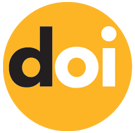Instagram Geotag
Examining consumer satisfaction on instagram social media
Keywords:
consumer, geotagging, Instagram, marketing, social mediaAbstract
The purpose of the research conducted was to determine consumer satisfaction using the geotagging feature on Instagram social media. Provide information to readers who have an interest in using Instagram geotags to find out consumer behavior, especially consumer satisfaction. As reference material for future research on consumer satisfaction in influencing consumer behavior. This research is expected to play a role in the development of knowledge in the field of marketing management and can provide input and considerations to readers in analyzing changes in consumer behavior, especially in consumer satisfaction.
Downloads
References
Alfajri, M. F., Adhiazni, V., & Aini, Q. (2019). Pemanfaatan Social Media Analytics Pada Instagram Dalam Peningkatan Efektivitas Pemasaran. Interaksi: Jurnal Ilmu Komunikasi, 8(1), 34-42.
Annisa, N., Hartono, B. D., & Syarun, M. (2021). Analisis Strategi Pemasaran dan Diferensiasi Produk Melalui Instagram Dalam Menciptakan Loyalitas Konsumen di Kedai Kopi Darling Habit. Jurnal Manajemen Bisnis Dan Publik (JMBP), 1(1), 20-31.
Casaló, L. V., Flavián, C., & Ibáñez-Sánchez, S. (2020). Influencers on Instagram: Antecedents and consequences of opinion leadership. Journal of business research, 117, 510-519. https://doi.org/10.1016/j.jbusres.2018.07.005
Chua, A., Servillo, L., Marcheggiani, E., & Moere, A. V. (2016). Mapping Cilento: Using geotagged social media data to characterize tourist flows in southern Italy. Tourism Management, 57, 295-310. https://doi.org/10.1016/j.tourman.2016.06.013
Cohen, R., Newton-John, T., & Slater, A. (2017). The relationship between Facebook and Instagram appearance-focused activities and body image concerns in young women. Body image, 23, 183-187. https://doi.org/10.1016/j.bodyim.2017.10.002
Dahnil, M. I., Marzuki, K. M., Langgat, J., & Fabeil, N. F. (2014). Factors influencing SMEs adoption of social media marketing. Procedia-social and behavioral sciences, 148, 119-126. https://doi.org/10.1016/j.sbspro.2014.07.025
De Vries, L., Gensler, S., & Leeflang, P. S. (2012). Popularity of brand posts on brand fan pages: An investigation of the effects of social media marketing. Journal of interactive marketing, 26(2), 83-91. https://doi.org/10.1016/j.intmar.2012.01.003
Erdo?mu?, ?. E., & Cicek, M. (2012). The impact of social media marketing on brand loyalty. Procedia-Social and behavioral sciences, 58, 1353-1360. https://doi.org/10.1016/j.sbspro.2012.09.1119
Gultom, H. C. (2018). Pemanfaatan Sosial Media Instagram Sebagai Sarana Pemasaran Alternatif. JAB (Jurnal Akuntansi & Bisnis), 3(02).
Handika, M. R., & Darma, G. S. (2018). Strategi pemasaran bisnis kuliner menggunakan influencer melalui media sosial instagram. Jurnal Manajemen Bisnis, 15(2), 192-203.
Hariyoga, I. M., & Suryanata, I. G. N. P. (2021). Instastory Perilaku Konsumen Di Era New Normal. Jurnal Manajemen dan Bisnis: Performa, 18(2).
Herdiansyah, D., Fahrizal, M., & Diah, J. M. (2022). Understanding the basics of content-based marketing and promotion on social media in the technological innovation. International Journal of Business, Economics & Management, 5(4), 393-402. https://doi.org/10.21744/ijbem.v5n4.2012
Kotler, P., & Armstrong, G. (2008). Prinsip-prinsip pemasaran.
Kotler, P., Armstrong, G., Saunders, J., Wong, V., Miquel, S., Bigné, E., & Cámara, D. (2000). Introducción al marketing. Pearson Prentice Hall.
Krismajayanti, N. P. A., & Darma, G. S. (2021). Eksplorasi Loyalitas Millennial Terhadap Brand Apple. Prestige or Needs. Jurnal Manajemen dan Bisnis (Performa), 18(3), 32-44.
Maslow, A. H. (1943). Preface to motivation theory. Psychosomatic medicine.
Merdeka. (2021). Menkominfo: Indonesia Jadi Negara Keempat Pengguna Internet Terbesar Dunia. In Merdeka.com. https://www.merdeka.com/teknologi/menkominfo-indonesia-jadi-negara-keempat-pengguna-internet-terbesar-dunia.html
Naimah, R. J., Wardhana, M. W., Haryanto, R., & Pebrianto, A. (2020). Penerapan Digital marketing Sebagai Strategi Pemasaran UMKM. Jurnal IMPACT: Implementation and Action, 2(2), 119-130.
Rachmawati, E., Juminawati, S., Akbar, I., Bahri, K. N., & Cakranegara, P. A. (2022). The importance of understanding the application of marketing strategy for household MSME products on social media networks. International Journal of Business, Economics & Management, 5(1), 76-85. https://doi.org/10.21744/ijbem.v5n1.1880
Rossanty, Y., & Putra Nasution, M. D. T. (2018). Information Search And Intentions To Purchase: The Role Of Country Of Origin Image, Product Knowledge, And Product Involvement. Journal of Theoretical & Applied Information Technology, 96(10).
Sembiring, N. T. (2020). Gaya Hidup Generasi Millenial (Studi Kasus Pengunjung Cafe Live Music Holywings di Kota Medan).
Sheth, J. (2020). Impact of Covid-19 on consumer behavior: Will the old habits return or die?. Journal of business research, 117, 280-283. https://doi.org/10.1016/j.jbusres.2020.05.059
Stewart, D. W. (2009). Marketing accountability: Linking marketing actions to financial results. Journal of business research, 62(6), 636-643. https://doi.org/10.1016/j.jbusres.2008.02.005
Sugiyono, F. X. (2017). Instrumen Pengendalian Moneter: Operasi Pasar Terbuka (Vol. 10). Pusat
Syafirah, S., Mananeke, L., & Rotinsulu, J. J. (2017). Pengaruh Faktor-Faktor Perilaku Konsumen Terhadap Keputusan Pembelian Produk Pada Holland Bakery Manado. Jurnal EMBA: Jurnal Riset Ekonomi, Manajemen, Bisnis dan Akuntansi, 5(2).
Tjiptono, F. (2000). Manajemen jasa.
Wilcock, A., Pun, M., Khanona, J., & Aung, M. (2004). Consumer attitudes, knowledge and behaviour: a review of food safety issues. Trends in food science & technology, 15(2), 56-66. https://doi.org/10.1016/j.tifs.2003.08.004
Yanti, N., & Mustikarini, C. N. (2018). Upaya Optimalisasi Penggunaan Instagram pada Bisnis Stay Apparel. Jurnal Manajemen dan Start-Up Bisnis, 3(2), 154-162.
Zhang, S., & Zhou, W. (2018). Recreational visits to urban parks and factors affecting park visits: Evidence from geotagged social media data. Landscape and urban planning, 180, 27-35. https://doi.org/10.1016/j.landurbplan.2018.08.004
Published
How to Cite
Issue
Section
Copyright (c) 2022 International journal of business, economics & management

This work is licensed under a Creative Commons Attribution-NonCommercial-NoDerivatives 4.0 International License.
Articles published in the International Journal of Business, Economics & Management (IJBEM) are available under Creative Commons Attribution Non-Commercial No Derivatives Licence (CC BY-NC-ND 4.0). Authors retain copyright in their work and grant IJBEM right of first publication under CC BY-NC-ND 4.0. Users have the right to read, download, copy, distribute, print, search, or link to the full texts of articles in this journal, and to use them for any other lawful purpose.
Articles published in IJBEM can be copied, communicated and shared in their published form for non-commercial purposes provided full attribution is given to the author and the journal. Authors are able to enter into separate, additional contractual arrangements for the non-exclusive distribution of the journal's published version of the work (e.g., post it to an institutional repository or publish it in a book), with an acknowledgment of its initial publication in this journal.














